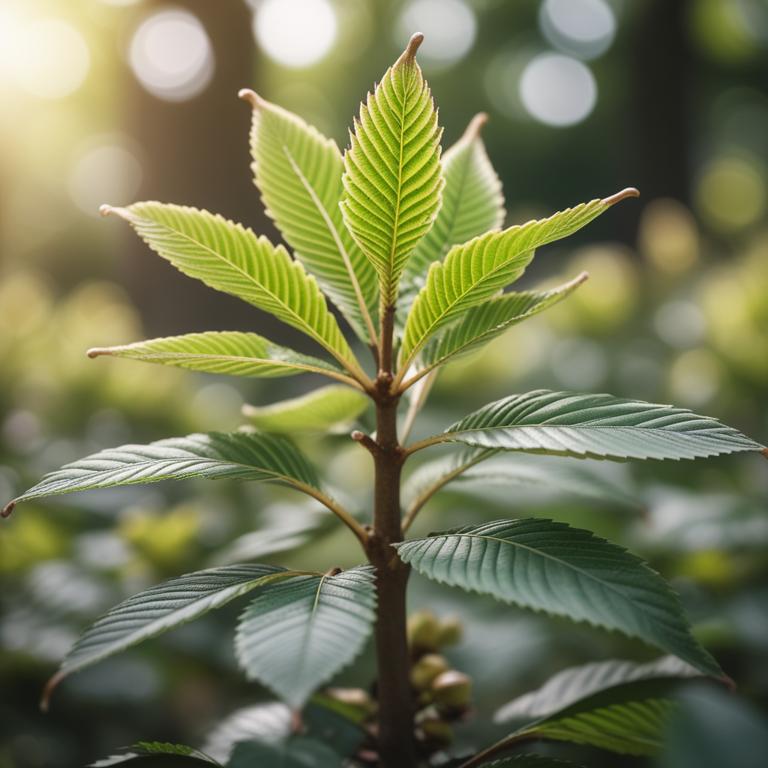9 Aesculus Hippocastanum Best Medicinal Preparations

1. Extract
Aesculus hippocastanum extract is a concentrated form of the horse chestnut plant, traditionally used in herbal medicine to support vein health and alleviate symptoms of varicose veins and chronic venous insufficiency. Rich in flavonoids and saponins, the extract is believed to have anti-inflammatory and antioxidant properties that may help to improve circulation and reduce swelling. When used as a dietary supplement, aesculus hippocastanum extract is often recommended in conjunction with a healthy lifestyle and regular exercise to promote overall well-being.
2. Tincture
Aesculus hippocastanum tincture is a homeopathic remedy derived from the horse chestnut plant, traditionally used to alleviate symptoms of varicose veins and venous insufficiency. The tincture is believed to have anti-inflammatory properties that help reduce swelling and ease pain associated with varicose veins. However, its effectiveness and safety as a treatment for varicose veins have not been extensively scientifically proven, and further research is needed to confirm its benefits.
3. Infused oil
Aesculus hippocastanum infused oil is a natural remedy extracted from the leaves of the horse chestnut tree, renowned for its anti-inflammatory and antioxidant properties. This infused oil has been traditionally used to soothe and calm irritated skin, while also promoting healthy blood flow and reducing swelling. When applied topically, aesculus hippocastanum infused oil can provide long-lasting relief and protection for the skin, making it an excellent addition to skincare routines.
4. Glycerite
Aesculus hippocastanum glycerite is a homeopathic remedy derived from the horse chestnut plant, traditionally used to support healthy circulation and alleviate symptoms associated with varicose veins. It is often prepared by infusing the leaves and flowers of the plant in glycerin, creating a concentrated liquid extract. This glycerite is believed to have anti-inflammatory properties, making it a popular natural remedy for relieving swelling and discomfort in the legs.
5. Salve
Aesculus hippocastanum salve is a topical remedy derived from the horse chestnut tree, known for its anti-inflammatory and antiseptic properties. This natural salve is often used to soothe and calm irritated skin, reducing redness and swelling associated with insect bites, minor cuts, and scrapes. By harnessing the extracts from the Aesculus hippocastanum plant, the salve provides a gentle and effective solution for various skin issues.
6. Cream
Aesculus hippocastanum cream is a topical treatment derived from the seeds of the horse chestnut tree, rich in aescin, a compound known for its anti-inflammatory properties. It is commonly used to alleviate symptoms of hemorrhoids, varicose veins, and poor circulation, providing relief from discomfort and pain. Regular application of aesculus hippocastanum cream can also help to reduce swelling and improve overall skin health.
7. Gum
Aesculus hippocastanum gum is a unique and versatile resin derived from the horse chestnut tree, known for its anti-inflammatory and antimicrobial properties. This sticky substance has been traditionally used in various medicinal applications, including wound care and skin conditions. Its astringent and protective qualities make it a valuable ingredient in the production of ointments, creams, and other topical formulations.
8. Lozenge
Aesculus hippocastanum lozenge is a traditional herbal remedy often used to support heart health and circulation, typically containing extracts of the horse chestnut plant. This lozenge is usually taken to alleviate symptoms of varicose veins, swelling, and inflammation, particularly in the legs and feet. Regular use of the aesculus hippocastanum lozenge may also help to improve overall blood flow and reduce the risk of blood clots.
9. Capsule
Aesculus hippocastanum capsule is a distinctive feature of the horse chestnut tree, characterized by its spiky, green or brown appearance. When mature, the capsule splits open to reveal shiny brown seeds, also known as conkers, which are popular for their ornamental value. The capsule typically remains on the tree throughout the winter months, providing a striking visual element to the tree's winter landscape.